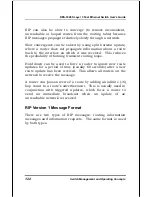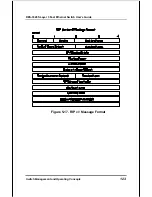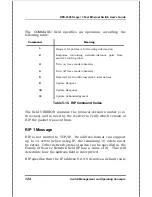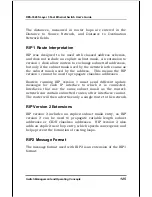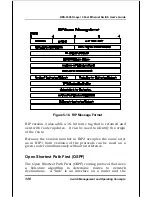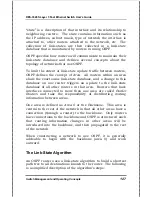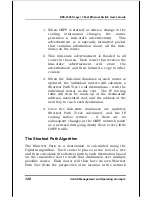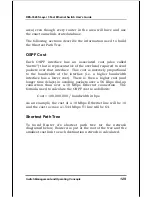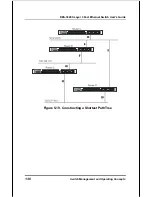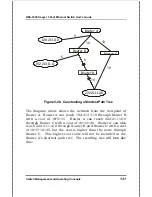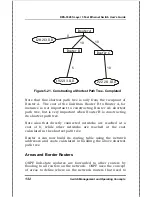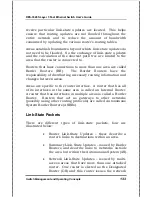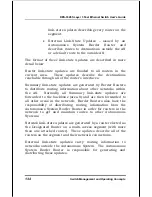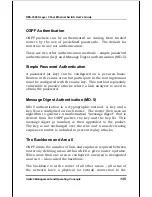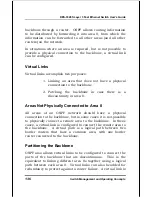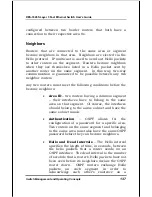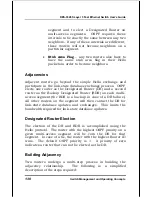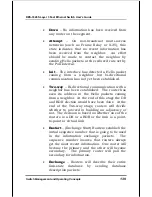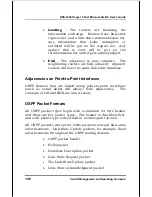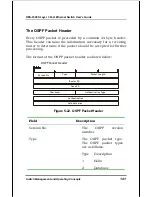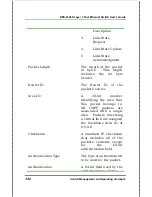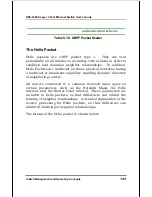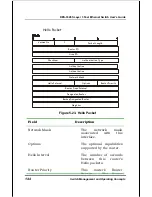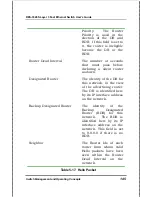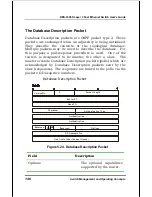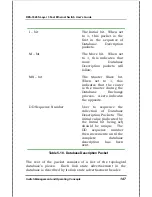
DES-3326S Layer 3 Fast Ethernet Switch User’s Guide
136
Switch Management and Operating Concepts
backbone through a router. OSPF allows routing information
to be distributed by forwarding it into area 0, from which the
information can be forwarded to all other areas (and all other
routers) on the network.
In situations where an area is required, but is not possible to
provide a physical connection to the backbone, a virtual link
can be configured.
Virtual Links
Virtual links accomplish two purposes:
1. Linking an area that does not have a physical
connection to the backbone.
2. Patching the backbone in case there is a
discontinuity in area 0.
Areas Not Physically Connected to Area 0
All areas of an OSPF network should have a physical
connection to the backbone, but is some cases it is not possible
to physically connect a remote area to the backbone. In these
cases, a virtual link is configured to connect the remote area to
the backbone. A virtual path is a logical path between two
border routers that have a common area, with one border
router connected to the backbone.
Partitioning the Backbone
OSPF also allows virtual links to be configured to connect the
parts of the backbone that are discontinuous. This is the
equivalent to linking different area 0s together using a logical
path between each area 0. Virtual links can also be added for
redundancy to protect against a router failure. A virtual link is

